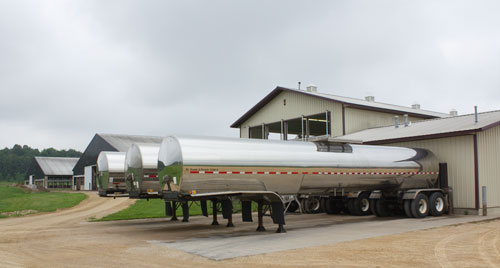
A great deal of information can be gleaned from Corey Freije's recent paper on the Upper Midwest Federal Milk Marketing Order. While dairy marketers will turn their eye towards the fact that 10 percent of the Upper Midwest's 14,254 dairy herds produced 58 percent of the milk last year, others will also be interested in knowing that milk from all Midwest farms had a higher cheese yield than the prior year. Let's look a bit deeper into that paper.
Components levels - the raw materials needed to make cheese and butter - have improved in the past two years. Butterfat tests averaged 3.81 percent last year compared to 3.73 percent just two years earlier. December 2013 posted the highest butterfat at 3.92 percent, while last July was the low mark at 3.67 percent.
Meanwhile, protein moved from 3.06 in 2011 to 3.11 percent last year. Like butterfat, protein levels were lowest in July at 2.98 percent and highest in December at 3.20 percent.
Milk quality, meanwhile, has flat lined a bit with the 224,000 SCC (somatic cell count) up slightly from 2012's 220. However the 224 SCC mark was much better than 2011's 245. Over the 10-year run, SCC - the main standard for measuring milk quality - has dropped significantly from 312,000 in 2003, reported Freije.
Digging a bit deeper into the SCC issue, Freije found that the simple average for SCC was 266. That indicates that larger producers tended, on average, to have lower SCC than their smaller counterparts because the weighted average was 224 for 2013.
As a point of information, the Upper Midwest Milk Marketing order consists of Wisconsin, Minnesota and Michigan's Upper Peninsula along with parts of Illinois, Iowa, North and South Dakota. The complete paper can be found at: www.fmma30.com/Homepage/FO30_STAFF_PAPERS.htm








